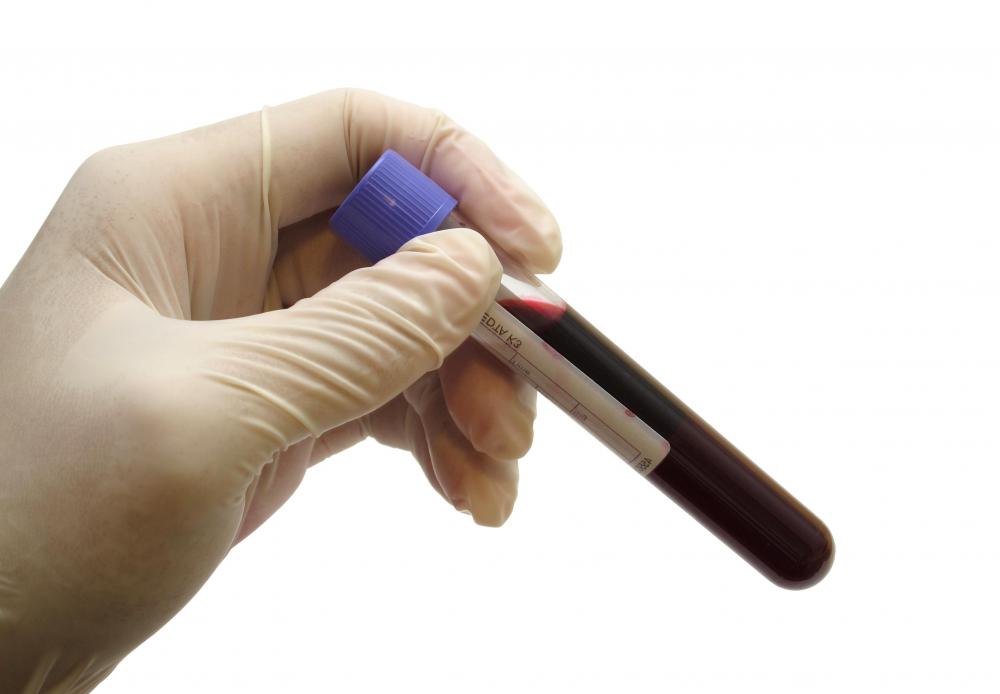At WiseGEEK, we're committed to delivering accurate, trustworthy information. Our expert-authored content is rigorously fact-checked and sourced from credible authorities. Discover how we uphold the highest standards in providing you with reliable knowledge.
What Is Live Blood Analysis?
Live blood analysis (LBA) is a microscopic test used for the analysis of live blood cells. Also called nutritional blood analysis and live cell analysis, it entails the application of dark field microscopy. Among proponents, it is believed that in vitro analysis of blood cells provides valuable health clues that are otherwise not gathered during the usual blood analyses. It is believed to provide evidence of the presence of nutritional imbalances and parasites, as well as digestive, circulatory, and respiratory problems.
In this test, a sample of blood is obtained from the patient’s fingertip using a sterile lancet. The sample is then placed on a slide that is covered with a glass slip, and then immediately visualized through a dark field microscopy. After 24 hours, the blood sample is viewed again.

A dark field or dark ground microscope provides contrast in otherwise unstained samples. The end result is an image wherein the field surrounding the specimen is dark. Dark field microscopy is effective in studying unstained biological samples, particularly for tissue cultures and single-celled organisms, such as protozoa. When dark field microscopy is applied to live blood analysis, the blood cells are visualized and monitored by a camera, and conclusions are drawn based on the movement and interaction of these blood cells.

According to several alternative medicine practitioners, live blood analysis can give information on the presence of vitamin deficiencies, blood toxicities, electrolyte and pH imbalance, immune states, and fungal or yeast infections. Others view it as a tool for detecting cancer or degenerative immune diseases. There is no widely accepted scientific evidence that live blood analysis can provide data on these conditions. In particular, some alternative medicine experts state that live blood analysis lacks the scientific characteristics of sensitivity, specificity, reproducibility, and reliability, which are all essential in proclaiming a diagnostic as effective. Based on these observations, some feel this practice is a scheme to make patients buy unneeded dietary supplements.

Regulations and penalties have been imposed on people and laboratories performing this test. The claim of being able to diagnose illnesses with this test is recognized as fraudulent and can be considered a criminal offense in some jurisdictions. People are advised to be conscientious of practitioners and health institutions that offer this test. Sound medical tests that can be used instead of live blood analysis include complete blood count and differential count, peripheral blood smear, and flow cytometry.
AS FEATURED ON:
AS FEATURED ON:














Discuss this Article
Post your comments